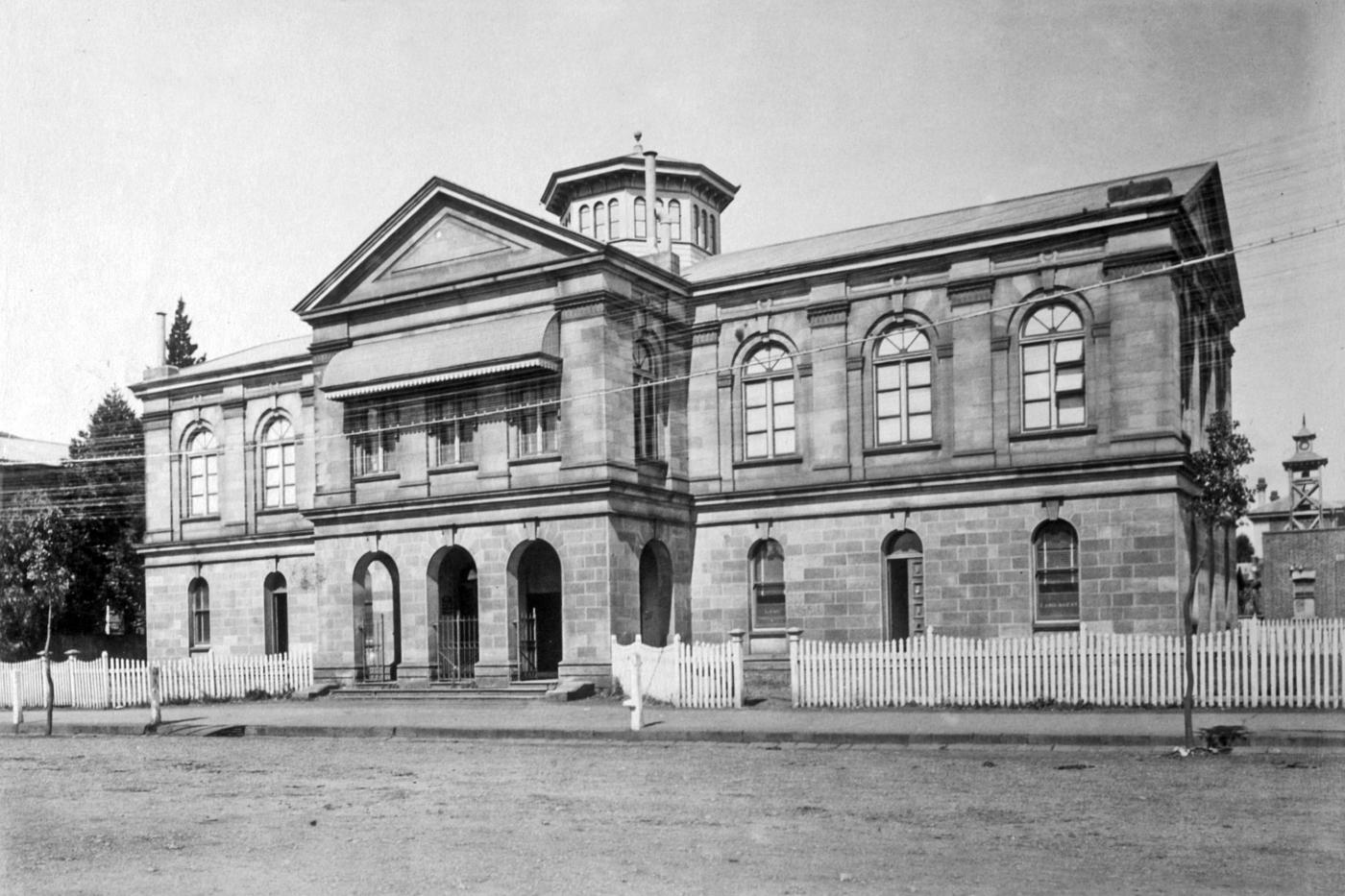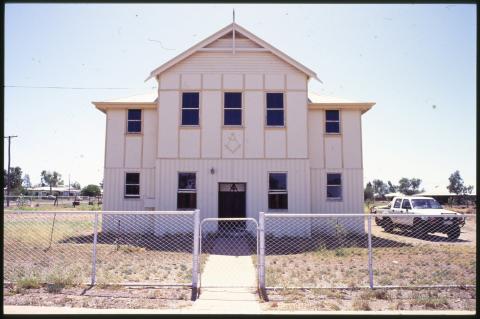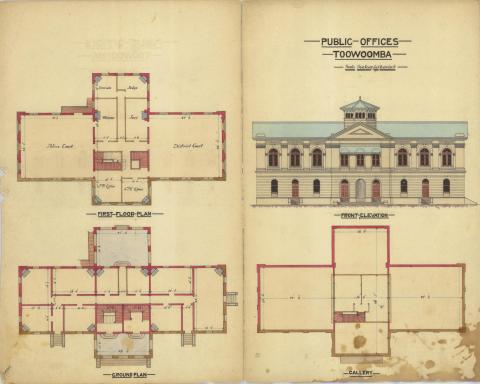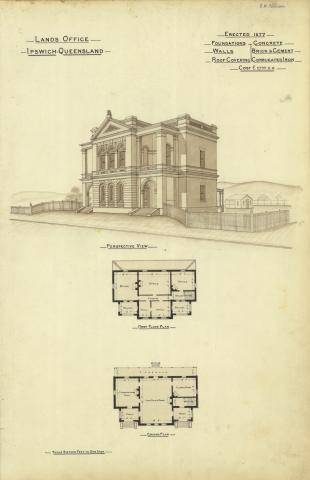
- News of the day
-
Toowoomba Chronicle and Darling Downs General Advertiser,
Saturday 20 September 1879, page 2
The Toowoomba Court House
During the sitting of the recent Assizes His Honor Sir. Justice Lutwyche complained strongly of the Toowoomba Court House, and said he should make a representation of the matter to the Minister for Works. On Wednesday evening in the Assembly the following transpired in relation to the matter when considering the vote of £3839 for public buildings :-
Mr. Groom asked whether the Minister for Works had received any communication from his Honour Mr. Justice Lutwyche with reference to the state of the court-house at Toowoomba, and whether it was the intention of the Government to act upon any recommendation that might have been made? His Honor, stated in court that, owing to want of matting and other defects, the court could not hear the witnesses, and the jury could not hear the addressing counsel. Something was required to be done. The acoustic properties were very defective.
The Minister for Works said sufficient had been done to remedy the noises during the sitting of the court at Toowoomba, but, he had heard nothing about the deficiency of the acoustic properties of the building.
Mr. Griffith said the gallery of the Toowoomba Court-House was lighted by a lantern, and it was like being under a lens. He would not spend an afternoon in the gallery in summer for a trifle. There, was no ventilation, and if something was not done by the time the next assize sat— which would be in summer— people would be carried out fainting.
The Minister for Works said he had not heard any complaints of the kind mentioned, but if he should do so he would take steps to provide a remedy. There were many defects in the Brisbane Court-house also, and he was not quite certain that the member for North Brisbane was not responsible for them too.
Mr. Groom said £7, 000 was voted for a court-house at Toowoomba, but from extraordinary motives of economy the Colonial Architect was instructed not only to provide a court-house with the necessary offices, but Lands and Works Offices also. The result had been a building which in fifteen or twenty years hence would, if Toowoomba only prospered in the rate it had done in the past, be unfitted for the purpose for which it had been erected. Most of their public buildings were of a hideous character, and constructed without due regard to the requirements of the future. He did not say that was the fault of the Colonial Architect, for possibly that gentleman was limited as to means, and had to make the buildings of a certain shape and form. He should not at all be surprised if, at the Toowoomba Assizes in January, the great defects of the court-house would make themselves very apparent.
Mr. Griffith said his shoulders were broad enough to bear the blame the Minister for Works wished to place upon them. He did interfere with the design of the Toowoomba Court-house, but only to enable the Judge to get into it without having to press through the crowd. He would like to point out that the new court-house at Brisbane was entirely unfurnished, and that it had remained so for nearly six months. He trusted that someday it would be furnished so that it might be used. He gave instructions for the furniture before he left the Works Office.
Mr. Rutledge pointed out certain deficiencies in the Brisbane Court-house, and added that the building reflected no credit upon those who had to do with its construction.
- Background
-
The main section of the Toowoomba Court House was erected between 1876 and 1878. At the time of its construction, the Colonial Architect responsible for the design of public buildings was F D G Stanley.
Construction of the new Toowoomba law courts and public offices began in 1876. They replaced an earlier, smaller building, also located in Margaret Street, which was constructed in 1863. The new building was much larger than the previous one and of a more imposing design, indicative of the sense of prosperity and permanence felt by the town.
The building was erected in stages, the first of which was completed by 1878. The contractor for this section was J Gargett and the building was erected at a cost of £6 870. It was constructed of locally quarried cut stone from Highfields.
In 1913, a single storey building was erected at the rear of the site, for use as the Lands Office. It fronted Neil Street and adjoined the existing building. Although of a different stone, it was of a similar style to the original building, costing £1963-10 to erect.
Further additions were made to the site in 1943, including the addition of another storey to the 1913 building and two more two storeyed buildings behind the 1877 building. Of these, one was located at the eastern end of the existing building and attached to it, forming a 'U' shaped structure. The second building was freestanding and located in the centre of the 'U' shape. The additions were constructed at a cost of £28 799 and were designed by government architect R C Nowland.
In 1979, a substantial refurbishment was undertaken. The Court House is now used by a number of organisations, including the Police Department and the Department of Sport and Tourism. The interior layout bears little resemblance to the 1878 or 1943 layouts.
Courtesy of Queensland Heritage Register
/151.9558655,-27.5612938,7/450x450@2x.png?access_token=pk.eyJ1IjoicXNhLWRpc2NvLXFsZCIsImEiOiJjamJmdTgyZXEyeWNjMnlxZm8xcmtieHgxIn0.lmT9J5tTPKGuuccQgCVSAg)



